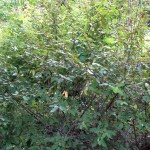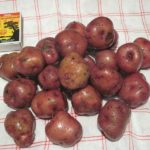By Catherine Haug, June 14, 1017 (Photo, right, of a native shrub in my yard, is by Catherine)
We all love our wildlife, and there are lots of things you can do to help protect them, right in your yard. The following recommendations come from the Wildlife Land Trust (1) [with comments by me or other members of our team in square brackets]. Note that some of the recommendations also help you, like bat houses.
In your home and yard:
- Seek humane solutions when a conflict arises with wildlife in your home or yard.
- Support migratory birds and other wildlife by replacing unused areas of lawn with native trees, shrubs, wildflowers and grasses that provide food and cover. [This is especially important if your ‘yard’ covers more than a couple acres. For more about Montana Native trees and other plants, the Montana Native Plant Society (2), Montana NativePlants for Pollinator-Friendly Plantings (3), Native Yards (4)].
- [Don’t feed deer, but plant some native shrubs that deer like to graze].
- Maintain a birdbath with clean, fresh water to help your backyard birds and migrating birds needing a rest stop.
- Install bat houses — happy bats, fewer bugs! [See National Wildlife Federation for how to build your own bat house (5)].
Read on for more recommendations.




